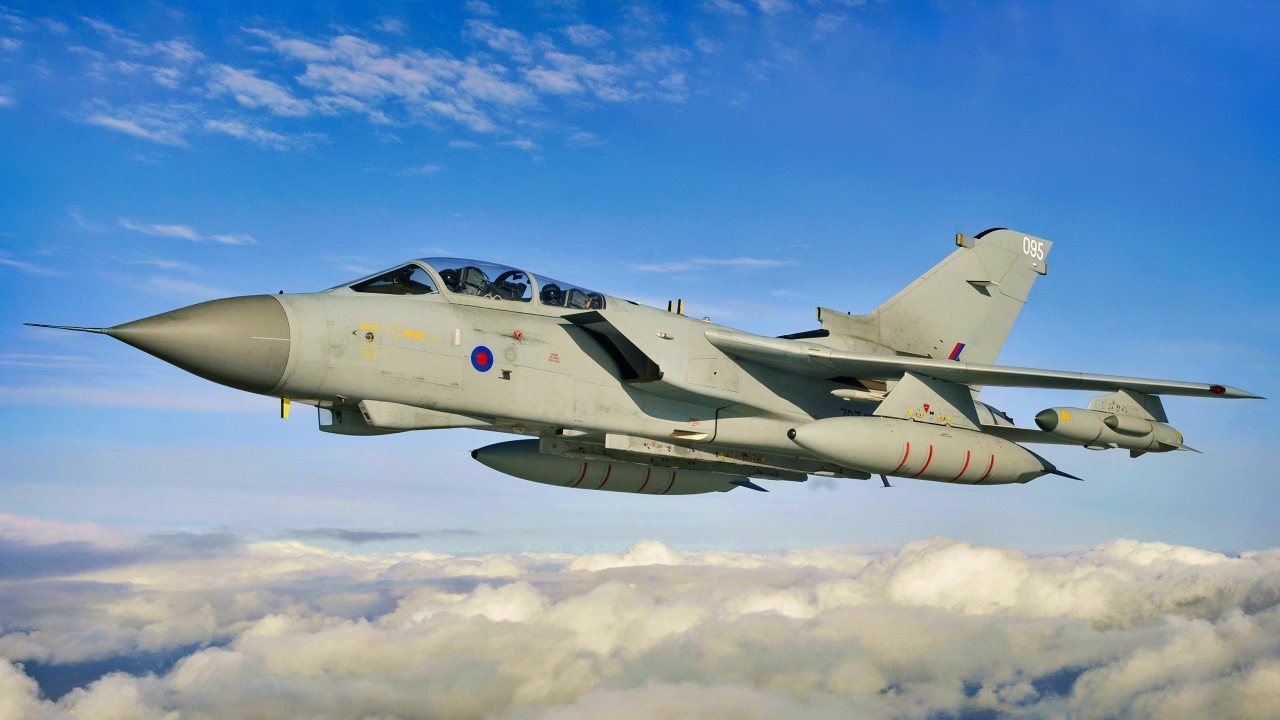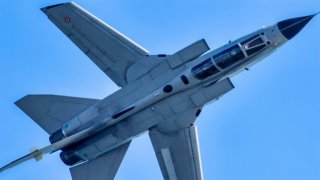Panavia Tornado: The Warplane Built for a Nuclear Strike Against Russia
Saudi Arabia was the only export customer for the PanaviaTornado, and the Kingdom acquired ninety-six IDS and twenty-four ADV aircraft. As of 2014, the Saudi IDS aircraft were the only ones remaining in service.
Panavia Tornado: A History - Given the sky-high cost of advanced aircraft development in the 21st century, multinational collaboration is quite common – yet it largely began in the late 1960s with the Panavia Tornado as a tri-national effort between the UK, West Germany, and Italy.
Initially developed as an all-weather strike aircraft and interdictor, the aircraft also served as the basis for a long-range interceptor and as a dedicated defense suppression warplane.
First flown in 1974 and introduced formally in 1979, as originally devised, the Tornado was intended to serve as a long-range, low-level interdictor with primarily nuclear armament. One goal for the combat aircraft would be to use nuclear weapons to stop the mass of Warsaw Pact forces that would attack NATO if World War III would break out. The twin-cockpit aircraft featured a combination of variable geometry, fuel-efficient turbofan engines with thrust reversers, and a large varied payload.
Its variable-geometry wings featured all-metal construction, with fixed inboard portions and movable outer panels. Instead of ailerons, spoilers were placed in each upper surface. The all-metal tailfin structure also included a rudder and low-set all-moving horizontal tail surfaces or "tailerons." Those could be operated collectively as elevators or differentially.
PanaviaTornado IDS
For its strike missions, the Tornado IDS (Interdictor Strike) version could utilize its "swing" wings to loiter efficiently at subsonic speeds before descending to treetop level for a high-speed strike at targets traveling at 921 mph (1,483km/h).
Despite having to carry weapons of more different types than any other tactical aircraft in history to that point, the Tornado was noted for being amazingly compact. At sea level in clean conditions, it was also the fastest combat aircraft of the era – while its wings had the highest lift coefficient of any fitted to a supersonic aircraft. No aircraft of its size had been so richly equipped for all-weather penetration of hostile airspace.
The three partner nations ordered 644 Tornado IDS aircraft, which included 220 for the Royal Air Force (RAF), 212 for West Germany's Luftwaffe, 112 for the Marineflieger (West German Naval Air Arm), and 100 for the Italian Air Force.
Air Defense Variant
Though the basic airframe, propulsion, and systems of the IDS version were largely the same, the Panavia Tornado F.2 Air Defence Version (ADV) featured different avionics and weapons, including the Marconi/Ferranti/Foxhunter radar as well as tandem pairs of Sky Flash missiles, which were semi-recessed under a lengthened fuselage. In addition, internal fuel was increased to extend unrefueled endurance.
The interim F.Mk2 was replaced by the Tornado F.Mk3, of which a total of 152 were delivered to the RAF beginning in 1986. This upgraded model included hands-on throttle and stick controls, radar-absorbent material coating, flare dispensers, and subsequently enhanced computers and datalink capability.
Under a Capability Sustainment Program, the aircraft was further advanced through the addition of AIM-120 AMRAAM and ASRAAM missiles, multi-target engagement capability and improved defensive sub-systems. The RAF further upgraded the plane with the GR.Mk4, which included a new cockpit display, full compatibility with navigation and improved laser designator po9ds for delivery of precision-guided munitions, integration of NVG (night vision goggles), and an updated forward-looking infrared sensor and enhanced self-defense suite.
The RAF operated a total 170 of the ADV aircraft.

Saudi Models and Combat Operations
Saudi Arabia was the only export customer for the PanaviaTornado, and the Kingdom acquired ninety-six IDS and twenty-four ADV aircraft. As of 2014, the Saudi IDS aircraft were the only ones remaining in service.
IDS models first saw action in Desert Storm in 1991 flown by the RAF, the Italian Air Force, and the Saudi Arabian Air Force; while RAF Tornados bore the brunt of the service's combat operations in Kosovo, Afghanistan and Libya. The Italian Tornado IDS aircraft also were used in operations in the Balkans, Afghanistan, and Libya.
The ADV variant was also deployed during Operation Desert Storm in 1991, over the former Yugoslavia in the late 1990s, and in other NATO peacekeeping actions by the RAF, Germany, and Italy.
About the Author
Peter Suciu is a Michigan-based writer who has contributed to more than four dozen magazines, newspapers and websites. He regularly writes about military hardware, and is the author of several books on military headgear including A Gallery of Military Headdress, which is available on Amazon.com. Peter is also a Contributing Writer for Forbes.
All images are Creative Commons.


